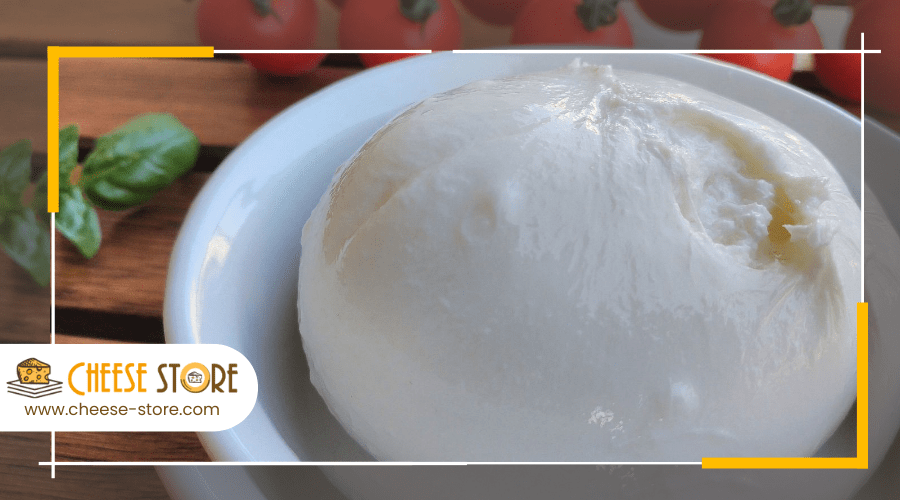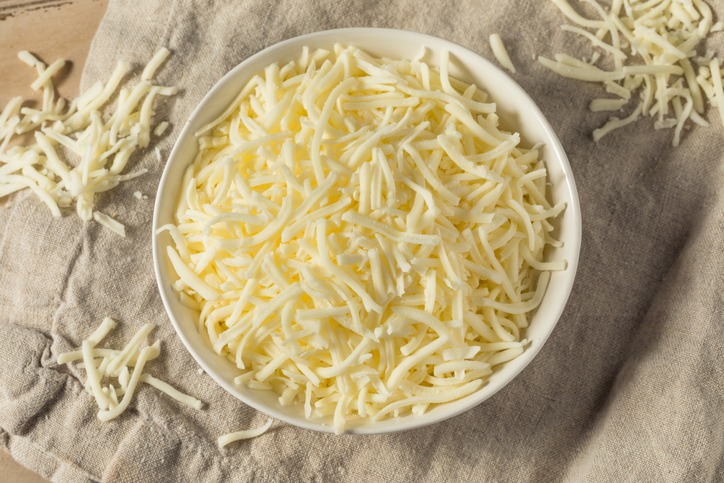In the world of culinary delights, venturing beyond your usual cheese choices can be a journey of discovery. You’ve likely indulged in the common staples, but there’s a whole domain of fresh cheeses waiting to elevate your dishes. From the creamy embrace of Burrata to the tangy kick of Feta, each variety offers a unique flavor profile and texture that can transform a simple meal into an extraordinary experience. As you explore these fresh options, you’ll uncover not only their culinary versatility but also how they can infuse your cooking with newfound creativity and elegance. Curiosity piqued? Let’s set off on this flavorful exploration together.
Key Takeaways
- Fresh cheeses like mozzarella and ricotta add creamy textures and subtle flavors to dishes.
- Burrata, with its luxurious texture, elevates Italian cuisine and is best enjoyed with fresh tomatoes and basil.
- Feta’s tangy flavor and crumbly texture make it versatile for salads and various dishes.
- Ricotta’s creamy consistency enhances both savory and sweet recipes, making it a must-try in culinary explorations.
Exploring Fresh Cheeses
Diving into the world of fresh cheeses, you’ll discover their creamy textures and subtle flavors that elevate any dish. Unlike aged varieties, these mild cheeses boast a high moisture content, resulting in a soft and silky consistency that’s simply irresistible. You’re not just tasting cheese; you’re experiencing the delicate flavors and creamy texture that make fresh cheeses so unique.
The production process plays a critical role here. It starts with curdling milk using enzymes or acids, which leads to the formation of light, fresh curds. This method guarantees that the cheese retains its moisture, contributing to its distinctive softness. You’ll find that this process not only preserves the natural tanginess of the milk but also enhances the cheese’s creamy texture.
What’s more, fresh cheeses are incredibly versatile. Whether you’re looking to add a touch of tanginess to your salad, enrich your sandwich, or complement your pasta dish, these cheeses are your go-to option. Their ability to pair wonderfully with fruits and herbs only adds to their appeal, offering a burst of flavor that’s both invigorating and rich. So, as you explore the world of fresh cheeses, let their creamy texture and delicate flavors inspire your next culinary creation.
Creamy Delights: Mozzarella
Exploring the world of fresh cheeses, you’ll quickly find that mozzarella stands out for its soft, creamy texture and mild, milky flavor. Originating from Italy, this cheese is traditionally made with buffalo’s milk, giving it a distinctive taste that’s both rich and comforting. It’s the creamy, smooth consistency and the elastic texture that make mozzarella a favorite, especially when it melts over your favorite dishes.
Mozzarella is a cornerstone of Italian cuisine, finding its way into classic recipes like Caprese salad, where its freshness complements the ripe tomatoes and basil, and onto pizzas and lasagnas, where its meltability is unmatched. But if you’re looking to indulge, Burrata takes the experience of mozzarella to another level. Encased in a mozzarella shell, Burrata’s creamy center, filled with stracciatella and cream, offers a luxurious texture contrast that’s simply irresistible.
The Versatile Feta Cheese
Let’s shift our focus to feta cheese, a brined curd variety renowned for its versatility in Mediterranean dishes. Originating from Greece or Bulgaria, feta is the cheese you need to enrich your culinary experiences. Made traditionally from sheep’s milk or a mix with goat’s milk, it offers a unique taste profile that’s both tangy and salty, perfect for a wide range of dishes.
Here’s why feta should be your go-to cheese:
- Tangy Flavor: Its slightly tangy taste is a game-changer in balancing the flavors in sweet or rich dishes.
- Crumbly Texture: Feta’s crumbly nature makes it an excellent topping for salads and other dishes where you want a bit of texture.
- Versatile Use: Whether crumbled over salads, incorporated into savory pastries, or enjoyed on its own, feta’s versatility knows no bounds.
- Mediterranean Authenticity: For the true Mediterranean flair, make sure your feta comes from Greece or Bulgaria.
- Sheep and Goat’s Milk: The combination of sheep’s and goat’s milk gives feta its distinctive taste and creamy yet crumbly texture.
Incorporate feta into your diet and discover the myriad ways it can enhance your meals with its unique, versatile character.
Ricotta: A Smooth Favorite
You’ve likely enjoyed the creamy delight of ricotta in various dishes, but have you ever pondered its origins? This cheese isn’t just a treat for the palate; its versatile use in both savory and sweet recipes, along with its nutritional benefits, make it a standout in the culinary world. Let’s explore the journey of ricotta from its traditional Italian roots to your kitchen, revealing its culinary flexibility and health perks.
Ricotta’s Origin Story
Originating from the heart of Italy’s Lombardy and Tuscany regions, ricotta boasts a creamy consistency and a slightly sweet flavor due to its unique production process of re-cooking leftover whey. This fresh cheese is a sign of Italian ingenuity, transforming a simple byproduct into something deliciously versatile.
Here’s why ricotta is a must-try:
- Made in Italy: From the picturesque Lombardy to the rolling hills of Tuscany, ricotta’s origins are deeply rooted in Italian tradition.
- Creamy Texture: Its smooth, creamy texture is irresistible.
- Slightly Sweet: A hint of sweetness makes it unique.
- Incredibly Versatile: Perfect for both savory and sweet dishes.
- Fresh and Easy: Unlike aged cheeses, ricotta is fresh and simple to make at home, spreading its popularity worldwide.
Versatile Culinary Uses
Often hailed as a culinary chameleon, ricotta’s silky texture seamlessly blends into both sweet and savory dishes. This fresh cheese, with its slightly sweet flavor, is a cornerstone in Italian cuisine, elevating lasagna, cannoli, and cheesecakes to new heights. As a versatile ingredient, ricotta proves its worth beyond traditional uses. Its high protein content transforms everyday meals into nutritious feasts without sacrificing taste. Whether you’re spreading it on toast for a quick snack or incorporating it into a sophisticated pasta dish, ricotta adds a luscious, creamy texture that complements rather than overwhelms. Chefs and home cooks alike cherish ricotta for its ability to harmonize with a plethora of flavors, making it a must-try in your culinary adventures.
Health Benefits Insights
While exploring ricotta’s culinary versatility, it’s also worth noting its impressive nutritional profile that benefits your health. Beyond its smooth texture and mild flavor, ricotta stands out among cheeses for several reasons:
- It’s a rich source of protein, supporting muscle function and growth.
- Ricotta is packed with calcium, essential for bone health.
- Its lower in fat content makes it a healthier choice for those monitoring their calorie intake.
- The high whey content in ricotta means it’s easily digestible, even for those with lactose intolerance.
- Its versatile uses in dishes add a creamy texture without compromising on health.
Incorporating ricotta into your diet brings not just a burst of flavor but a host of nutritional benefits as well.
Discovering Burrata’s Richness
As you explore Burrata’s origins, you’ll find yourself in the heart of Italy’s Apulia region, where this creamy cheese first came to life. Learning about its serving suggestions, you’ll discover that it shines when served at room temperature, perfectly complementing fresh tomatoes and basil. Pairing wines with Burrata becomes an exciting adventure, elevating your dining experience with selections that match its rich, buttery flavor.
Origin of Burrata Cheese
Hailing from the Puglia region of Southern Italy, specifically the town of Andria, burrata cheese boasts a rich and creamy texture that its name, translating to ‘buttery’ in Italian, aptly captures. This traditional cheese is a proof of the ingenuity of Italian cheese makers.
- Burrata is a fresh Italian cheese made by combining mozzarella and cream for a unique filling.
- The name ‘burrata’ means ‘buttery,’ highlighting its luxurious texture.
- It originated as a method to utilize leftover mozzarella scraps, turning waste into a delicacy.
- The filling consists of soft, stringy curd mixed with cream, creating its signature creaminess.
- To truly appreciate its delicate flavors, it’s best enjoyed fresh, within days of production.
Discovering burrata’s richness is a journey to the heart of Southern Italy’s culinary traditions.
Burrata Serving Suggestions
Now that you’re familiar with burrata’s origins and unique characteristics, let’s explore how to best serve this creamy delight to fully appreciate its flavors. Enjoying burrata at room temperature releases the full potential of its creamy cheese center, encased in a mozzarella shell. This preparation, made traditionally from buffalo’s milk, promises a luxurious texture.
| Serving Suggestions | Ingredients | Why It Works |
|---|---|---|
| Caprese Salad | Ripe tomatoes, fresh herbs, olive oil | The contrast of textures and fresh flavors highlight burrata’s creaminess. |
| Crostini | Grilled bread, olive oil, basil | Crispy bread offers a delightful contrast to the soft cheese. |
| Peach Salad | Fresh peaches, arugula, balsamic glaze | Sweet peaches pair beautifully with the rich, creamy cheese. |
| Pasta | Fresh pasta, light sauce, basil | Burrata melts into the pasta, adding a creamy texture. |
These combinations promise to accentuate burrata’s unique qualities, ensuring a memorable culinary experience.
Pairing Wines With Burrata
To truly elevate your burrata experience, consider pairing it with wines like Sauvignon Blanc or Chardonnay, which complement its creamy richness perfectly. The unique texture and flavor of this fresh cheese deserve wines that enhance its character without overwhelming it. Here’s a quick guide:
- Sauvignon Blanc: Its crispness slices through burrata’s creaminess, creating a harmonious balance.
- Chardonnay: The buttery notes of this wine match the lusciousness of burrata, offering a rejuvenating contrast.
- Pinot Grigio: Its lightness and slight acidity offer a invigorating contrast to the rich cheese.
- Prosecco: The bubbly’s effervescence cleanses the palate, making every bite of burrata feel like the first.
- Rosé: Though not mentioned earlier, its fruity undertones can also complement burrata’s richness, adding a different dimension to your pairing adventure.
Unveiling Lesser-Known Varieties
Plunge into the world of lesser-known cheeses and discover flavors you’ve been missing out on. Halloumi, a semihard cheese hailing from a blend of goat’s and sheep’s milk, offers a unique texture preserved in brine. It’s unlike anything you’ve tasted, straddling the line between the familiar and the exotic. Imagine the perfect balance between the tang of goat cheese and the richness of sheep’s milk cheese, all in one bite.
Then, there’s Burrata, an Italian cheese that takes the concept of creamy cheeses to a whole new level. Made traditionally with buffalo’s milk, its soft, indulgent flavor makes fresh mozzarella seem almost pedestrian in comparison. But don’t stop there. Ricotta, with its soft, creamy texture, elevates both sweet and savory dishes with a confirmation to the versatility of cow’s milk in cheese-making.
Expand your culinary horizons further with Paneer and Stracciatella. Paneer, a staple in Indian cuisine, impresses with its ability to hold shape when cooked, offering a unique texture. Meanwhile, Stracciatella, a soft, stringy cheese made from Italian buffalo milk, adds a luxurious touch to any dish. Each of these cheeses brings a unique flavor and texture profile, proving that the world of cheese extends far beyond the familiar.
Conclusion
So, you’ve journeyed through the world of fresh cheeses, discovering the creamy joys of Mozzarella, the versatility of Feta, the smoothness of Ricotta, and the rich indulgence of Burrata, not to mention some hidden gems along the way. It’s clear there’s a cheese for every taste and dish. Now’s the time to get creative in the kitchen, mixing and matching these delights with seasonal ingredients. Trust me, your palate’s about to set off on an unforgettable journey. Let the culinary adventure begin!




